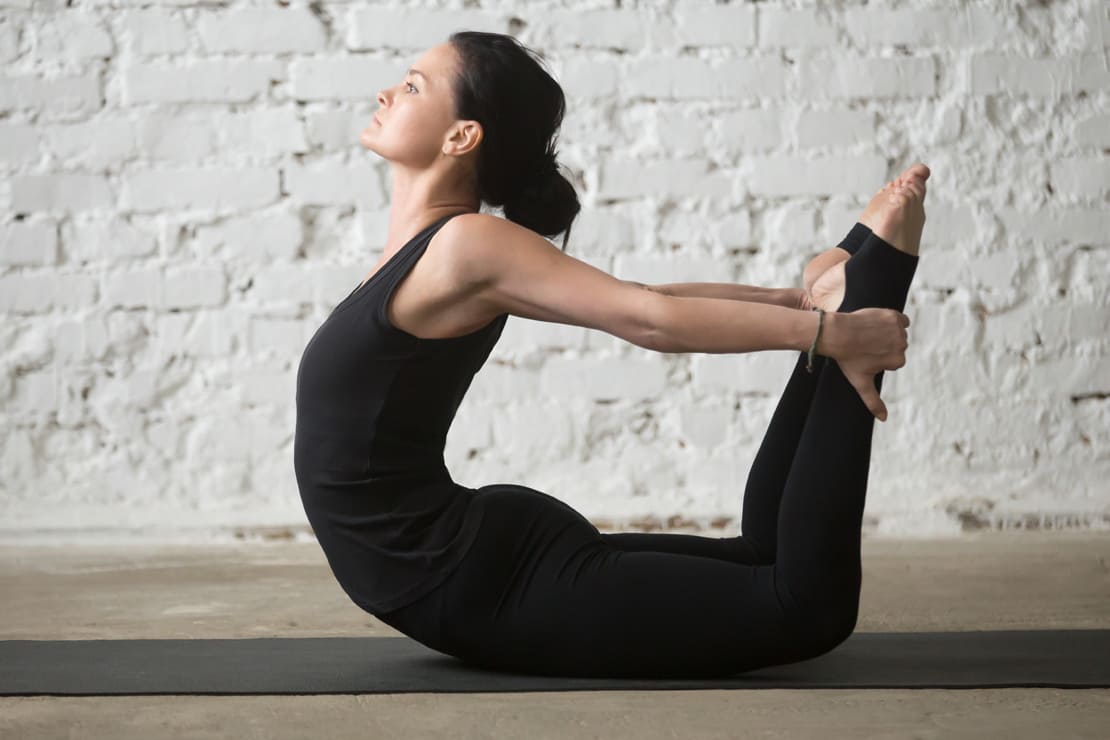Ladies, it’s important to be aware of Polycystic Ovarian Disease (PCOD), also known as Polycystic Ovary Syndrome (PCOS), as it’s a widespread hormonal disorder that impacts women of reproductive age. It causes irregular menstrual cycles, excess hair growth, weight gain, and fertility problems. Though PCOD can be managed with medical treatment and lifestyle changes, yoga has emerged as a natural and effective way to manage the symptoms. Practicing yoga regularly helps balance hormones, reduce stress, and improve overall health, offering relief to women suffering from PCOD.
Here are five yoga poses that are particularly effective in managing PCOD.
1. Baddha Konasana (Butterfly Pose)
The Butterfly Pose is one of the most effective poses for women with PCOD. It stimulates the reproductive organs and improves blood circulation in the pelvic region, helping in the proper functioning of the ovaries.

How to Perform:
- Get comfortable on the floor with your legs stretched out in front of you.
- Now, try bending your knees and bringing the soles of your feet together, allowing your knees to fall out to the sides. This simple move can help you relax and stretch your muscles.
- Keep your spine straight and gently flap your knees up and down like a butterfly’s wings.
- Hold the position for 1–2 minutes, focusing on deep breathing.
Benefits:
- Stimulates the ovaries and uterus.
- Relieves menstrual discomfort.
- Reduces stress and fatigue, two common triggers for PCOD symptoms.
2. Bhujangasana (Cobra Pose)
Cobra Pose helps regulate the functioning of the reproductive organs by stimulating blood flow to the pelvic region. It also strengthens the back muscles and relieves stress, both of which contribute to hormonal balance.

How to Perform:
- Get ready to stretch out and relax as you lie on your stomach with your legs extended and feet together.
- Place your palms firmly on the floor under your shoulders, and keep those elbows close to your body.
- Inhale, pressing your palms into the floor, and slowly lift your chest off the ground.
- Get ready to strike a powerful pose! Keep those elbows slightly bent, shoulders relaxed and away from your ears, and maintain a strong, focused gaze forward.
- Hold the pose for 15–30 seconds, breathing deeply.
- Exhale as you release and return to the starting position.
Benefits:
- Stimulates the reproductive system.
- Helps alleviate menstrual issues.
- Reduces stress and anxiety, which can exacerbate PCOD symptoms.
3. Dhanurasana (Bow Pose)
Bow Pose is excellent for stretching the entire body, especially the abdomen and reproductive organs. It helps release tension from the abdominal area, improving digestion and enhancing the functioning of the ovaries.

How to Perform:
- Get into position and feel the power! Lie flat on your stomach with your legs positioned hip-width apart.
- Bend your knees and reach back to gracefully hold your ankles with your hands. Feel the stretch and embrace the power of this posture.
- Take a deep breath and soar as you lift your chest and legs off the ground, reaching for the sky with your ankles. Feel the power and grace as you elevate your body.
- Keep your gaze forward, and try to balance your body on your abdomen.
- Hold the pose for 20–30 seconds, breathing steadily.
- Release as you exhale, returning to the starting position.
Benefits:
- Stimulates the abdominal organs and improves digestion.
- Enhances circulation to the reproductive system.
- Reduces symptoms of PCOD, including bloating and menstrual irregularities.
4. Malasana (Garland Pose)
Malasana, or Garland Pose, is a deep squat that opens up the hips and pelvic region, stimulating the reproductive organs. This pose is effective in regulating menstrual cycles and improving hormone balance.

How to Perform:
- Get ready to stand with your feet slightly wider than hip-width apart!
- Bend your knees and lower your hips into a squat position, bringing your pelvis as close to the floor as possible.
- Bring your hands together in a prayer position at your chest, pressing your elbows against the inside of your knees.
- Keep your spine straight and engage your core.
- Hold the position for 1–2 minutes, focusing on deep breathing.
Benefits:
- Improves flexibility in the hips and pelvis.
- Stimulates the reproductive organs and relieves bloating.
- Enhances digestion and relieves lower back tension, common in PCOD patients.
5. Setu Bandhasana (Bridge Pose)
Bridge Pose helps stretch and strengthen the pelvic muscles while stimulating the thyroid gland, which plays a crucial role in hormone regulation. This pose also alleviates stress, which can aggravate PCOD symptoms.

How to Perform:
- Lie on your back with your knees bent and your feet hip-width apart, flat on the floor.
- Get ready to strike a confident pose by placing your arms at your sides with your palms facing down.
- Inhale and lift your hips towards the ceiling, pressing your feet and shoulders into the ground.
- Clasp your hands underneath your body, lifting your chest and hips higher.
- Hold the position for 30 seconds to 1 minute, breathing deeply.
- Exhale forcefully and lower your hips back to the ground with steady control.
Benefits:
- Stimulates the reproductive organs and thyroid gland.
- Experience better circulation and find relief from back tension with this amazing solution.
- Reduces symptoms of anxiety and depression associated with PCOD.
Additional Tips for Managing PCOD with Yoga
While these poses are beneficial for managing PCOD, consistency is key. Practicing yoga daily for at least 30 minutes can bring noticeable improvements in symptoms. In addition to yoga, adopting a balanced diet, engaging in regular exercise, and managing stress through mindfulness techniques like meditation can further enhance the benefits of yoga in managing PCOD.
Breathing exercises (Pranayama) such as Kapalabhati (Skull Shining Breath) and Nadi Shodhana (Alternate Nostril Breathing) are also highly effective in balancing hormones and improving overall well-being. These techniques help reduce stress, detoxify the body, and regulate the hormonal system.
Conclusion
Yoga provides a holistic approach to managing PCOD by addressing both physical and mental aspects of the disorder. The combination of yoga poses and breathing techniques can help reduce PCOD symptoms, improve reproductive health, and restore hormonal balance. While it’s essential to consult a healthcare professional for personalized advice, incorporating yoga into your daily routine can be a powerful tool in managing this hormonal disorder naturally.
